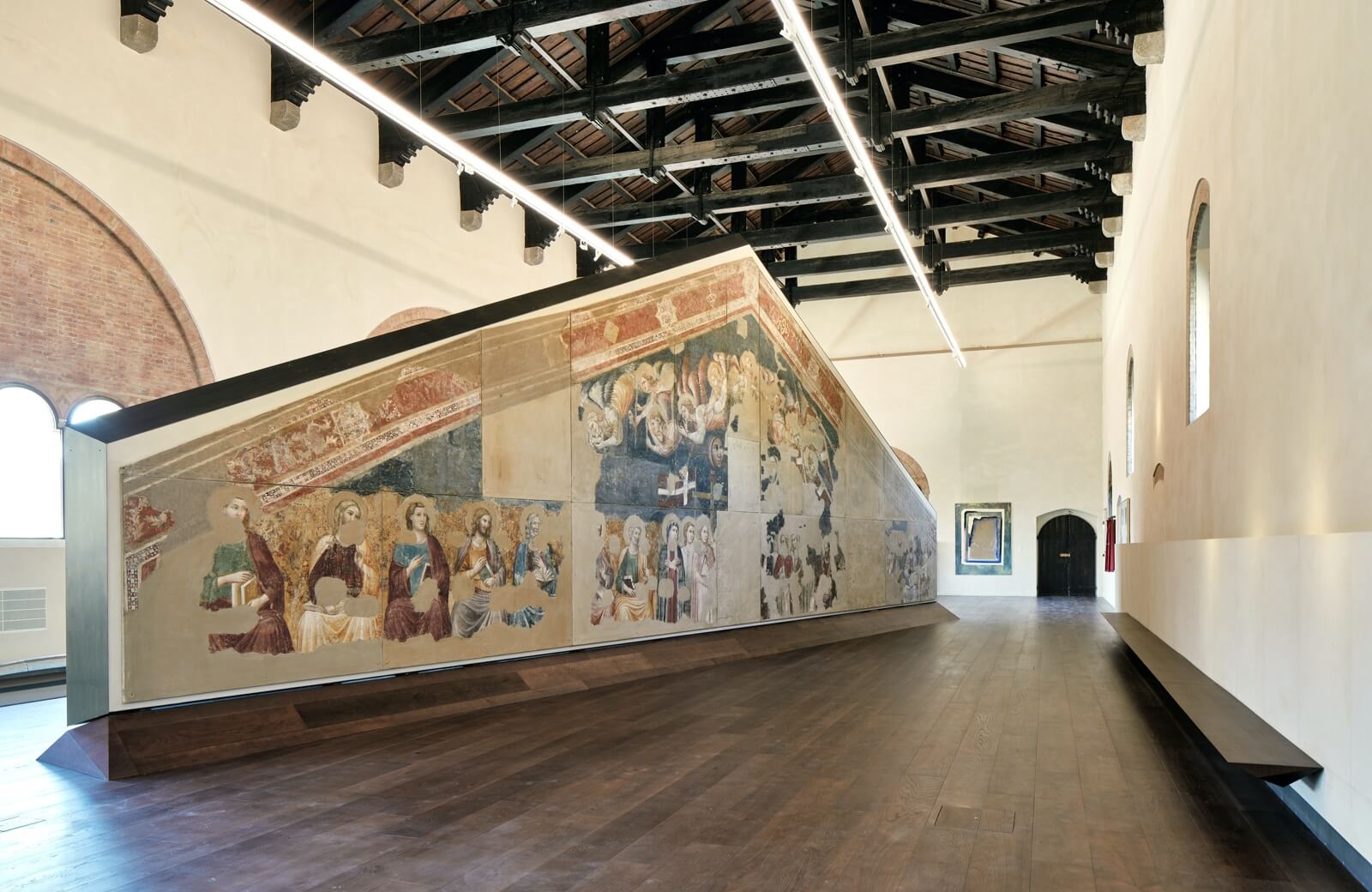Two historical buildings, restored to their architectural splendor. A new, different museum. A rare fresco, a masterpiece of Italian medieval art. An exceptional art collection: an exciting overview on contemporary creativity. In one of Rimini's most beautiful squares.
The link between Rimini and the newly restored, historical buildings of Arengo and Podestà, today Palazzi dell’Arte, and Palazzo Garampi, the headquarters of the Municipality and the Mayor’s Office, is more than merely symbolic. The PART clearly highlights the centrality of culture and art, of civic life and of the sense of community which now drives and guides the city’s policymaking.
Piazza Cavour and its surroundings are an example of this, right in the heart of the old town. The renovated Teatro Galli, the new Federico Fellini International Museum, the Pescheria and now the PART all dialogue with one another, highlighting the intentions and purpose of policies combining public space and public life, historical heritage and collective and individual development, all in a contemporary, plural and inclusive outlook.
This challenge arose in response to an unprecedented agreement between public and private institutions, one which led to the municipal chambers of the 13th-century Palazzo dell’Arengo and the 14th-century Palazzo del Podestà – now restored and rearranged in the light of a museographical project that respects and enhances their architectural characteristics – to house the Collection of the Fondazione San Patrignano.
The agreement between the Municipality of Rimini and the Foundation has thus endowed the city with a new museum, designed to provide citizens and visitors with the chance to approach contemporary art, as well as the means to enhance the donations of artworks received. The collection, begun in 2017 and continuously expanding, has been put together in support of the Community by Italian and international artists, collectors and gallerists.
